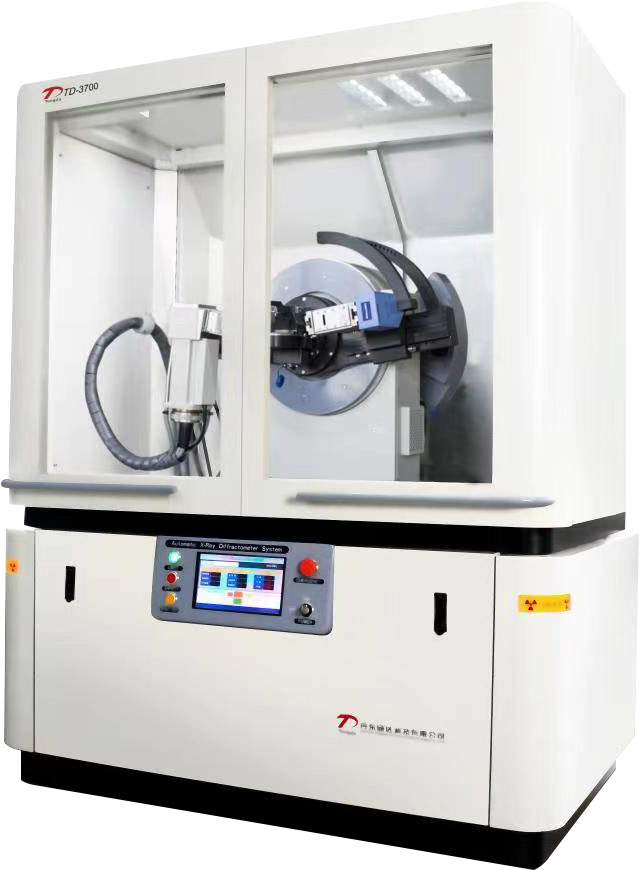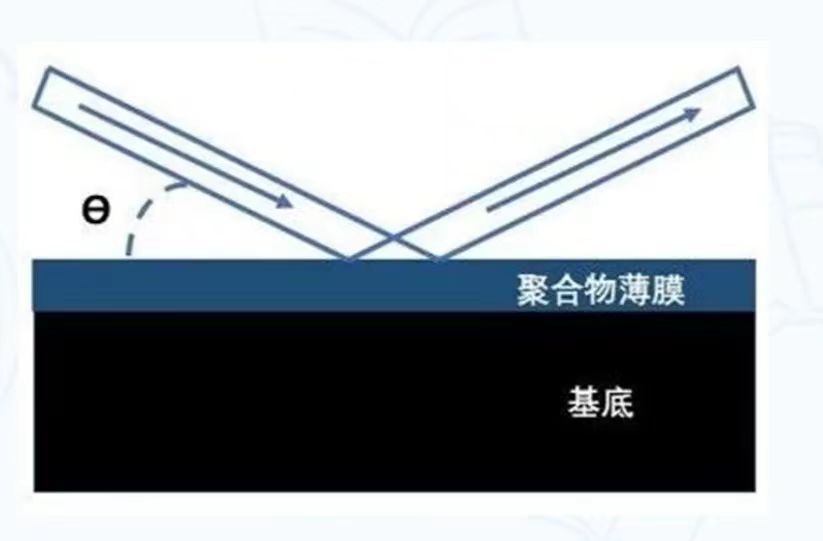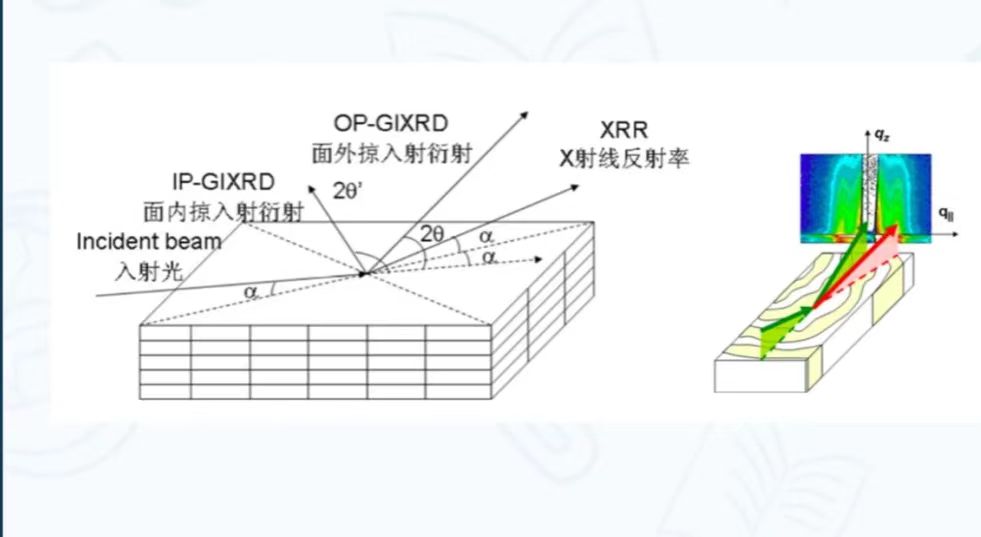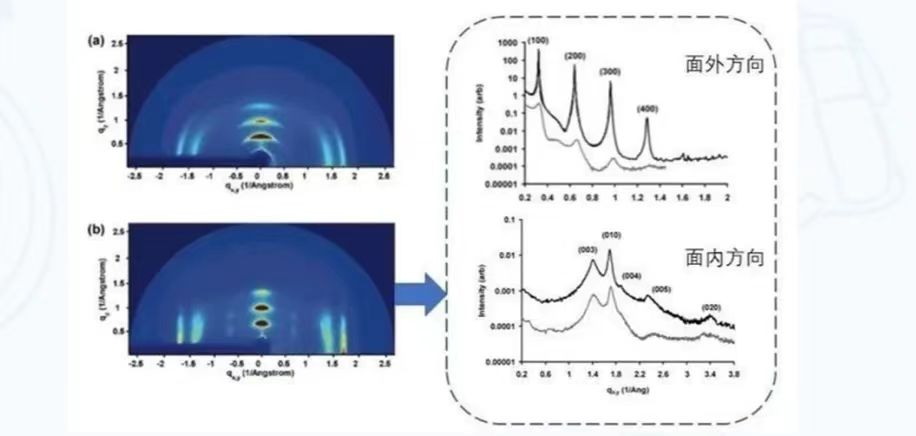
Application of GI-XRD technique in material characterization and structure analysis
2023-09-12 10:00一、X-ray diffraction technology
X-ray diffraction is one of the most commonly used experimental methods in materials science, and its application is very wide, which can be used in material characterization, structure analysis and other fields. Grazing-incidence X-ray diffraction (GI-XRD) is a kind of X-ray diffraction technique, which is different from the traditional XRD experiment, mainly by changing the Angle of X-ray incidence and the orientation of the sample. Grazing incidence XRD has many unique advantages and can play an important role in material characterization and structural analysis.

二、. Advantages
1. Reduce the influence of base signal and increase the irradiation area
Grazing incidence XRD is an advanced XRD technique used for material characterization and structural analysis. It is achieved by adjusting the Angle of incidence of the X-ray θ to very small (usually less than 1 degree). When the incidence Angle of the X-ray decreases, the incidence depth of the X-ray becomes shallower, which is conducive to reducing the influence of the base signal on the result. At the same time, the incidence Angle decreases and the irradiation area increases, which is conducive to enhancing the intensity of the film signal. Doing so maximizes the interaction of the X-rays with the sample surface, resulting in more detailed structural information. Since the Angle used by the graze-incidence XRD technique is very small, it requires special instruments and sample preparation methods in order to perform experiments.

2. Collection of 3D structure information
The molecules or molecular chains in the film are usually oriented, and conventional XRD can only observe the crystal structure in the out-of-plane direction, while GIXRD can obtain the three-dimensional structure information of the film. As shown in the figure, the X-ray is incident at a very small Angle, and the X-ray reflection and out-of-plane grazing incidence diffraction are projected in the qz direction of the detector plane, and the in-plane grazing incidence diffraction of the X-ray is projected in the qll direction (that is, the qxy direction), which can reflect the three-dimensional information of the film.

三、 Application
Grazing-incidence XRD technology has many applications in materials science, such as crystal growth, film preparation, interface chemistry, surface catalysis, and biomaterials. Thin film preparation is one of the main applications of grazing-incidence XRD. Grazing incidence XRD technique can be used to study the structure and lattice-oriented nanostructures of thin films. With this method, the crystal structure and defect structure of the film can be determined, and the performance of the film can be optimized.
Grazing incident XRD techniques can also be used for surface chemistry and catalysis studies. Surface catalysis is an important reaction mode, which promotes chemical reaction through the active site on the catalyst surface. Grazing incident XRD technique can help to study the structure of catalyst surface and the interaction between catalyst and reactant. This is important for optimizing catalyst properties and understanding chemical reaction mechanisms.
1. Analysis of alignment regularity
As shown in the figure, (a) is the initial polymer film, and (b) is the annealed film. It can be seen that the GIXRD diffraction pattern of the initial film is circular, and the intensity is weak, indicating that it is disordered in the film. The GIXRD pattern of the annealed film is speckle and strong, indicating that it is arranged in a more orderly manner in the film.

2. Judgment of orientation
As shown in the figure, (a) is the initial polymer film, and (b) is the annealed film. At the same time, one-dimensional data (qz and qxy directions) can be extracted from the two-dimensional graph, with the gray line being the initial polymer film and the black line being the annealed film. An annealed polymer film is taken as an example to illustrate the molecular arrangement in the film. • (100), (200), (300) and (400) can be seen in the out-of-plane direction, indicating that this direction is the direction of stacking of molecular alkyl side chains;

Grazing incident X-ray diffraction is suitable for studying the crystal structure of thin films, which can not only enhance the diffraction peak signal, but also obtain the three-dimensional structure information. In the analysis of the atlas, Bragg equation is used to calculate the stacking distance corresponding to the diffraction peak, so as to determine the three parameters of the diffraction peak (abc). Finally, combining the diffraction peak in and out of the plane, the stacking behavior of molecules in the film and the order degree of the microcrystals are deduced.
